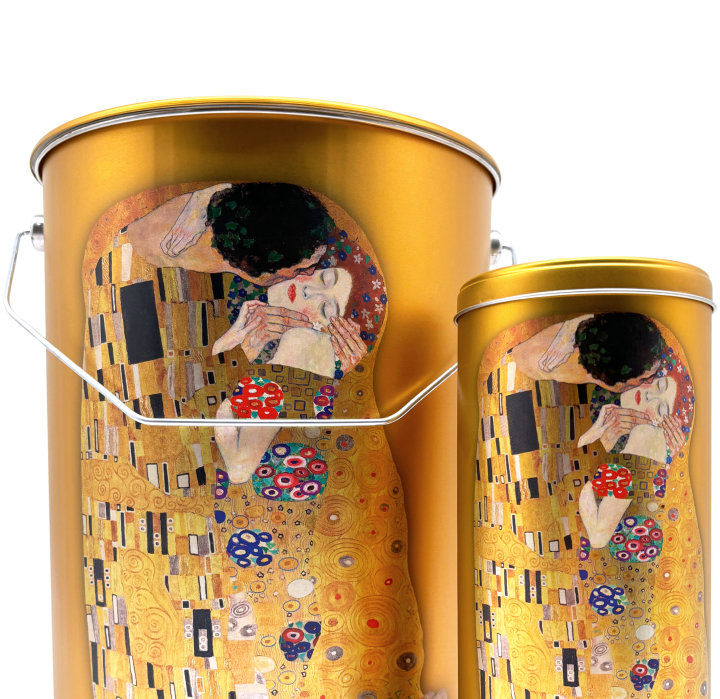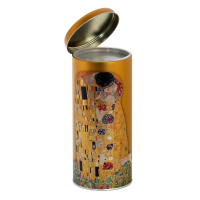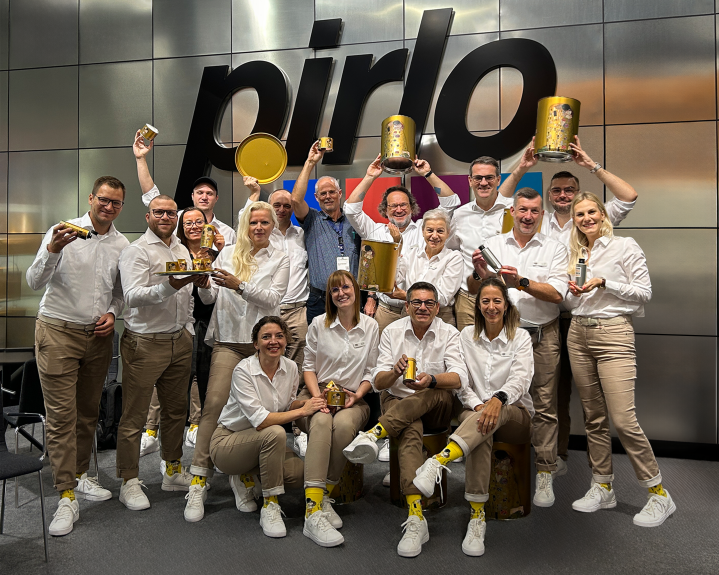Pirlo’s new campaign states: “Austria, 1908: Gustav Klimt painted The Kiss. Pirlo produced its first can.” How did this concept originate?
Wolfgang Schauer: We specialise in the production of metal and laminate packaging and operate within a niche segment of the market. In practice, this means we manufacture packaging solutions that other companies either do not wish to produce or are unable to deliver.
To demonstrate what is technically and aesthetically possible, we searched for a particularly demanding motif — ideally one with a thematic link to Pirlo. That led us to explore Austrian cultural heritage. When we realised that The Kiss was painted in the same year Pirlo was founded, it was immediately clear to us that this connection offered the perfect foundation for our campaign.
What does this association reveal about Pirlo’s brand identity?
Wolfgang Schauer: It captures the essence of what Pirlo represents. We are a company with a long-standing tradition and a strong connection to our Austrian roots — not only geographically, but also in our quality standards. At the same time, we see ourselves as enablers of progress, offering innovative packaging solutions.
Gustav Klimt was a pioneer in his field, and we identify with that spirit. We continuously advance our products — whether by developing new can designs, improving usability, or enhancing durability. Just as Klimt’s art is immediately recognisable, a Pirlo can is characterised by its high-end print quality and consistently precise production.
What were the main challenges in executing this campaign?
Wolfgang Schauer: Many people are familiar with Klimt-themed tins sold as souvenirs — they are decorative, but not generally associated with technical excellence. Our goal was to take a different approach: to realise a design and print standard that pays genuine tribute to the original artwork.
A particular challenge was the adaptation of the motif to a wide variety of packaging formats — from small spice tins and olive oil bottles to 30-litre pails — while preserving intricate detail. Colour consistency also presented significant complexity, especially across different materials such as aluminium and tinplate. In addition, we produced laminate tubes for hand cream featuring the same motif.
Yet it is precisely such complex assignments that demonstrate the capabilities of our team — and what Pirlo as a company stands for.
How have customers and partners responded to this campaign?
Wolfgang Schauer: The response has been overwhelmingly positive. At trade fairs, visitors immediately recognise the motif and often pause to engage. It frequently leads to personal conversations about art or memories associated with Klimt. In fact, many people have requested sample cans to take home as keepsakes or gifts.
Due to the high level of interest, we have now introduced a limited-edition Klimt coffee tin, available via our online shop dosenprofi.com.
What are your goals for this campaign?
Wolfgang Schauer: We have already achieved a degree of emotional engagement that exceeded our expectations. From our perspective, that is a significant success. If a can transcends its functional role and becomes a valued object — displayed in a kitchen, living space or office — then we have succeeded in elevating the perception of our brand.
Most people are familiar with Klimt — and many have, perhaps unknowingly, held a Pirlo can at some point: for spices, cosmetics, coffee, paint, or olive oil. Our name often remains in the background, as we produce packaging for many different brands.
With this campaign, we wish to highlight the company behind the packaging — a name defined by expertise, quality, and over a century of craftsmanship.



